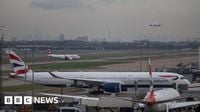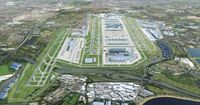On October 22, 2025, the UK government took a decisive step in the long-running debate over Heathrow Airport’s expansion, launching a comprehensive review of the Airports National Policy Statement (ANPS)—the key document that will shape whether and how a third runway gets built at the nation’s busiest airport. The announcement, delivered by Transport Secretary Heidi Alexander to a closely watching Parliament, signals a renewed push to resolve one of Britain’s most contentious infrastructure questions. After years of political wrangling, environmental protests, and shifting economic priorities, the government is now committed to selecting a developer and finalizing plans for a new runway before the end of the current Parliament.
The stakes are high. As Alexander made clear, the updated ANPS is expected to be published for consultation by summer 2026, with a final decision on the expansion due before 2030. The government’s ambition? To see flights taking off from the new runway by 2035. Such a timeline, if met, would mark a dramatic acceleration compared to the five-year process that led to the original ANPS in 2018. “When we say this government backs the builders, not the blockers, we mean it,” Alexander told MPs. “Today is a critical building block which will advance plans for the delivery of a third runway at Heathrow, meaning people can start to experience the full benefits sooner.” (as reported by BBC and The Times).
But what exactly is on the table? Out of seven initial proposals, only two remain under active consideration: one from Heathrow Airport Limited itself, and another from the Arora Group, led by hotel magnate Surinder Arora. Heathrow’s plan features a full-length 3,500-meter runway and an eye-watering £49 billion price tag, including major infrastructure such as a new road tunnel under the airport and a widened M25 motorway. Arora’s alternative is more modest in scale and cost—a 2,800-meter runway at £25 billion, though it would require additional infrastructure to support operations. Both bids are now under intense scrutiny, with the government requesting further details on community, environmental, and financial impacts. A final decision on which scheme to back is due by the end of November 2025.
The government insists that any expansion must meet four rigorous tests: it must boost economic growth, comply with air quality and noise standards, and align with the UK’s climate change laws, including the nation’s net zero targets. Formal advice will be sought from the independent Climate Change Committee to ensure the updated policy aligns with the UK’s climate commitments. As Alexander stated, “Our review of the ANPS will ensure that, while we unlock long-term capacity for more flights at the nation’s only hub airport, we will also meet our obligations to passengers, communities and the environment.” She also emphasized that the expansion must be privately financed, with no cost to taxpayers, and that developers must cover the bill for associated transport improvements—there’s no room for passing the buck to the public purse.
The government’s move comes amid a broader push to modernize British aviation. Recent approvals for expansions at Luton and Gatwick airports have signaled a willingness to back major projects that supporters say will create jobs and spur economic growth. Chancellor Rachel Reeves echoed this sentiment, declaring, “After decades of false starts, we are backing the builders to get Heathrow’s third runway built—creating thousands of jobs, boosting growth across the UK, and making Britain the world’s best-connected place to do business.” (Financial Times).
Industry leaders have welcomed the government’s renewed determination. Karen Dee, Chief Executive of Airports UK, called the move vital for increasing economic growth, while Tim Alderslade of Airlines UK stressed the need for any expansion to be affordable, deliverable, and consistent with net zero goals. Jane Gratton of the British Chambers of Commerce argued that “a third runway at Heathrow is vital to accelerating economic growth. Around 60% of the economic benefit will be felt outside London and the South East.” Heathrow CEO Thomas Woldbye described the airport’s proposal as “shovel-ready” and claimed it was “the only option that can be approved by 2029 and be up and running within a decade.”
Yet, for all the optimism from government and industry, the plans face fierce opposition from environmental groups, local politicians, and residents. Labour MP John McDonnell, whose Hayes and Harlington constituency sits in Heathrow’s shadow, labeled the expansion a “white elephant.” He warned, “There is no way we can meet our climate change targets if this goes ahead.” McDonnell also raised the specter of mass displacement, claiming up to 15,000 people could lose their homes. “Where are they going to live, where are their children going to be educated and what will happen to their overall community?” he asked in Parliament.
London Mayor Sadiq Khan and Green Party MP Sian Berry have both criticized the expansion, citing concerns over noise, air pollution, and the potential to blow the UK’s carbon budget. Berry accused the government of prioritizing “wealthy frequent flyers above the needs of people on the ground” and urged ministers to focus instead on issues like energy bills and housing. Local campaign group HACAN clear skies, which represents residents under Heathrow’s flight paths, echoed these worries. Policy director Paul Beckford said, “The ANPS review does provide some clarity about the timeline and opportunities to engage with the Government on the proposals. However, our members and local communities impacted will be forgiven for a sense of deja vu as we yet again have a Government claiming to be focused on evidence based policy delivery yet deciding to support expansion at Heathrow without having done any of the economic or environmental analysis that could support such a position.”
The government, for its part, has promised to develop detailed analysis on the environmental and economic impacts of expansion in the coming months and to undertake a full appraisal of sustainability. Ministers are also advancing planning reforms through the Planning and Infrastructure Bill, aimed at simplifying approvals and reducing judicial review delays. There’s talk of designating the third runway as critical national infrastructure, which would bring enhanced security and resilience standards. Meanwhile, the Sustainable Aviation Fuel (SAF) Bill is set to boost domestic SAF production with a £63 million investment, and a new UK Airspace Design Service will modernize the country’s airspace, alongside reforms to ensure fair slot access at Heathrow, Gatwick, and Luton.
Heathrow Reimagined, a campaign group, has cautiously welcomed the government’s commitment but stressed that expansion “cannot come at any cost.” A spokesperson said, “Heathrow is already the most expensive airport in the world. We welcome the Government’s commitment to ensure Heathrow third runway expansion is competitive, affordable and represents value for money. The full benefits of expansion to consumers, businesses and the UK economy will only be achieved through fundamental regulatory reform at Heathrow, and we look forward to the CAA’s upcoming review Working Paper.”
As the clock ticks toward the government’s self-imposed deadlines, the battle over Heathrow’s future is set to intensify. With economic ambitions, environmental imperatives, and local community concerns all in the mix, the coming months will reveal whether this latest push for expansion can finally break the decades-long deadlock—or whether it will simply become another chapter in the airport’s long and turbulent history.


